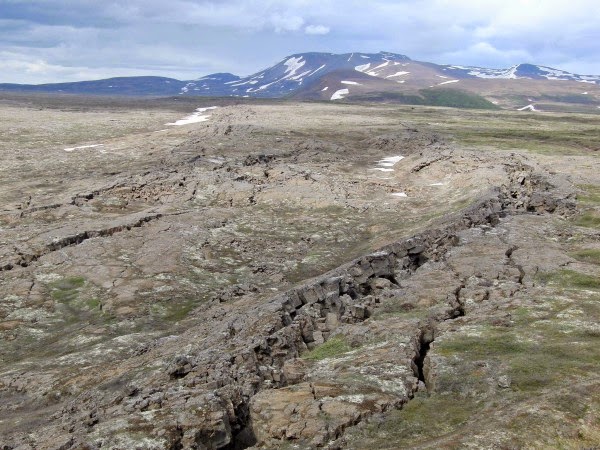
Seismologists have long yearned for a way to forecast imminent earthquakes, which remain predictable only in a long-term probabilistic sense. Past studies have suggested that earthquake precursors could take the form of changes in electromagnetic fields, radon levels, or even animal behavior—but the evidence has been anything but rock-solid.
Now, researchers have found that, just before two large earthquakes in Iceland, geochemical signals changed dramatically in nearby ground water. Measuring ground water from a 100-meter-deep borehole, they found that hydrogen isotope ratios and sodium levels spiked in the months before the earthquake. One magnitude-5.6 earthquake occurred in October 2012 along the Húsavík-Flatey fault (pictured), and the other, a magnitude-5.5, went off in April 2013 in the Grímsey Oblique Rift.
The researchers, publishing online today in Nature Geoscience, suggest that the changes could have been caused by a subtle stress-induced expansion of the rocks in the lead-up to the earthquake. The expansion, and the microfractures associated with it, could have triggered the geochemical spikes by allowing the mixing of separate bodies of ground water with different geochemical signatures.
Note : The above story is based on materials provided by Eric Hand “American Association for the Advancement of Science.”










